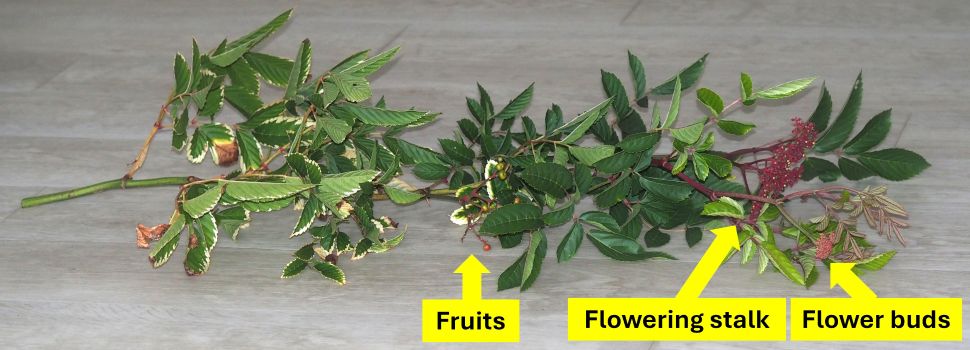| Home | Nature Weekly Index |
15 June 2025 | Red Leea | Leea rubra |
The Red Leea (Leea rubra) became part of my collection of potted plants by happenstance. It initially emerged as an unidentified seedling in a large pot containing a small Longan tree. Its growth was inhibited due to the Longan tree consuming most of the soil's nutrients. Initially, I speculated that the plant might be a Shield Aralia (Polyscias scutellaria). As it was not a species of particular interest to me, I left it in its original pot until August 2024. At that time, I decided that observing the growth of a Shield Aralia would be beneficial. Consequently, I relocated the seedling to a smaller pot of its own (Fig. 1).
.jpg) |
.jpg) |
.jpg) |
.jpg) |
| Fig. 1: Seedling of Red Leea (Leea rubra) on 29 August 2024 | Fig. 2: Young Red Leea (Leea rubra) on 6 November 2024 | ||
As the seedling's growth accelerated, its true identity began to emerge (Fig. 2). The plant exhibited relatively rapid development. Within a few months, it extended beyond the balcony area and commenced flowering. Regrettably, I was unable to observe the flowering process from my balcony due to the height of the plant. To view the flowering, it was necessary to ascend a level in the apartment block and observe it from the common corridor above.
The plant has been consuming a significant amount of water due to increasing demand. I need to irrigate it every few hours on hotter days, as the pot is relatively small. Three weeks ago, I decided to trim the plant to reduce its water consumption in preparation for an overseas trip scheduled a week later. Fortunately, I arranged for someone to water my plants during my absence, allowing me to perform only minor trimming of the plant. At this time, the Red Leea exhibited three stems emerging from the soil, with the central stem being the original one that produced flowering stalks. I decided to remove part of the central stem to examine the flowers and fruits.
The cut specimen measured approximately 1 metre in length (Fig. 3), and included a stalk with several fruits, another stalk with flower buds, blooming flowers, and immature fruits, and a third young stalk with flower buds.
 |
 |
| Fig. 3: The cut specimen of Red Leea (Leea rubra) on 23 May 2025 and the dissected flowering and fruiting stalks |
The genus Leea in Singapore has been thoroughly documented [1]. According to the 2011 publication, of the four species mentioned, Leea indica (Bandicoot Berry) is the most prevalent wild species and can be easily found in nature parks. Additionally, Leea rubra has been extensively cultivated in parks, gardens, and along roadsides.
Reference:
[1] Lok AFSL, Ang WF, Ng BYQ, Suen SM, Yeo CK, Tan HTW. Leea L. (Vitaceae) of Singapore. Nature in Singapore 2011;4:55-71. | Read article |